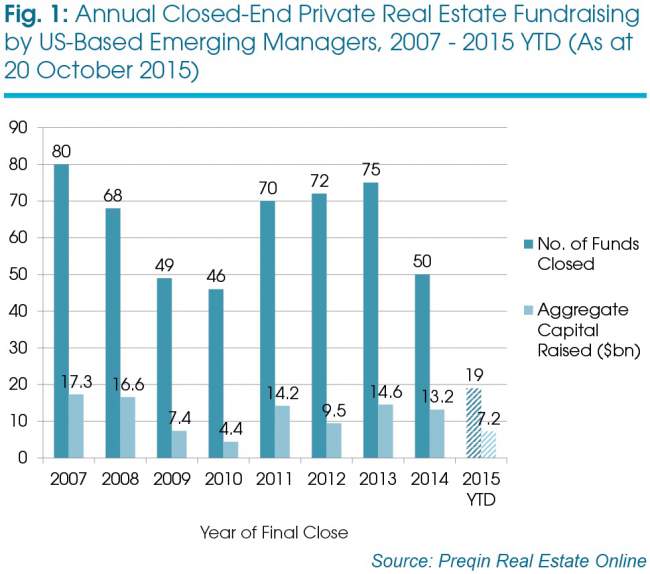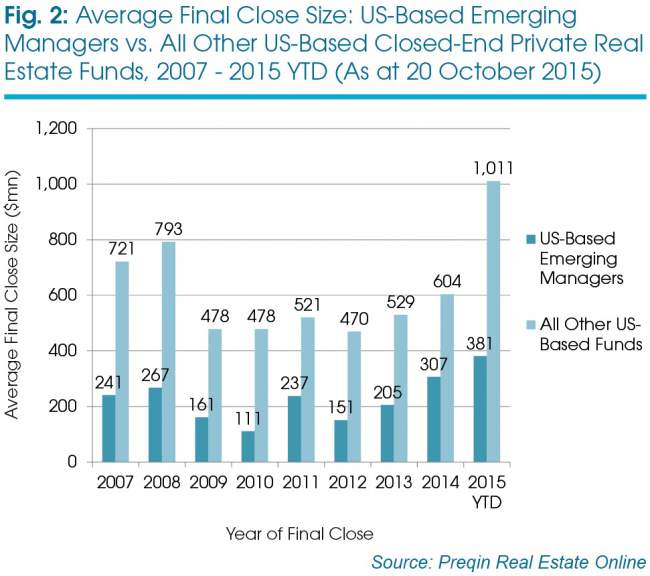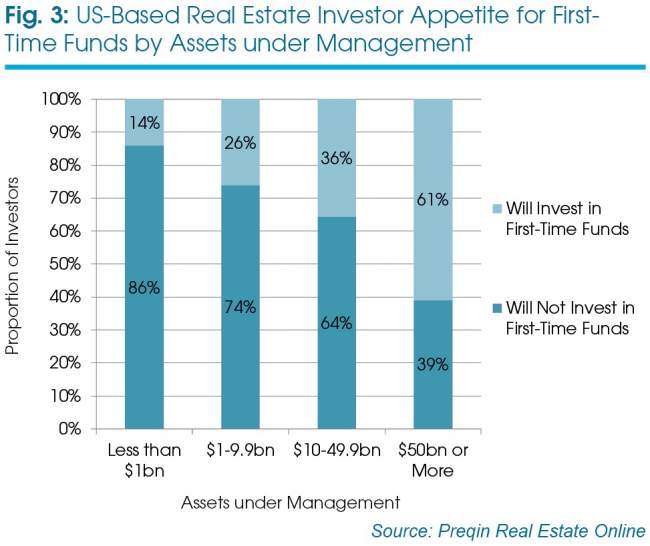Preqin’s latest factsheet takes a detailed look at closed-end private real estate fundraising for emerging managers in the US.
Fundraising
Preqin’s Real Estate Online contains detailed information on 529 private real estate funds managed by US-based emerging managers*, which have secured a total of USD104 billion since 2007. Fundraising by US-based emerging private real estate managers has not emulated its pre-crisis peak in 2007 of 80 funds reaching a final close on USD17.3 billion in capital commitments (Fig 1). The downturn led to year-on-year declines in aggregate capital raised before recovering in 2011, when USD14 billion was raised by 70 funds. Interestingly, although one-third fewer funds reached a final close in 2014 than in 2013, aggregate capital remained at a similar level. US-based emerging managers have struggled in 2015 however, with only 19 funds reaching a final close, securing USD7.2 billion. Despite this, the pipeline of US-based emerging managers bringing funds to market remains strong; there are 105 private real estate funds in market that are managed by US-based emerging firms, seeking USD16.5 billion.
With fewer funds closing but more capital being raised, the average final close size of vehicles, including those raised by emerging managers, has increased over recent years (Fig 2). From 2012 to 2014, the average size of a fund managed by a US-based emerging firm increased by 103 per cent, compared with 29 per cent for all other funds managed by US-based real estate firms. So far this year, the gap has widened between the average final close sizes of funds raised by emerging managers (USD381 million) and all other funds (USD1 billion).
The proportion of total capital raised by US-based private real estate funds accounted for by emerging managers has declined by 20 percentage points since its peak in 2011 (32 per cent) and has remained below 23 per cent of total capital since 2012. As it stands, emerging manager funds closed in 2015 have secured the lowest proportion (12 per cent) of overall US-based private real estate capital in the period 2007 to present.
The majority of funds closed and aggregate capital raised by US-based emerging managers since 2007 has been for higher risk opportunistic and value added strategies, although the increasing prominence of real estate debt funds over recent years has led to the strategy securing a quarter of total US-based emerging manager capital. Unsurprisingly, most US-based emerging firms are more comfortable investing capital close to home: 95 per cent of funds closed by emerging managers have focused on real estate in North America.
Investor Appetite
Preqin’s Real Estate Online contains detailed information on over 2,600 US-based institutional investors active in real estate, including their attitudes towards investment with less experienced managers. Many private real estate investors look for managers with a strong track record, resulting in the majority (60 per cent) of the US-based private real estate investor population stating that they will not invest in first-time funds. However, there has been a slight increase in appetite for first-time funds in recent years, rising from 16 per cent of investors willing to invest in first-time funds in October 2013 to 20 per cent in October 2015. As such, attracting investor capital is often perceived as the biggest challenge faced by emerging managers, particularly in the current market. However, there is a clear correlation between appetite for first-time funds and institutional investor assets under management (AUM). Eighty-six percent of firms with AUM of less than USD1 billion will not invest in first-time private real estate funds, while 61 per cent of firms with over USD50 billion in AUM will invest with new fund managers (Fig 3).
This article is an extract from Preqin’s latest factsheet, focusing on the fundraising US-based emerging managers in the private real estate industry. Read full factsheet here.









